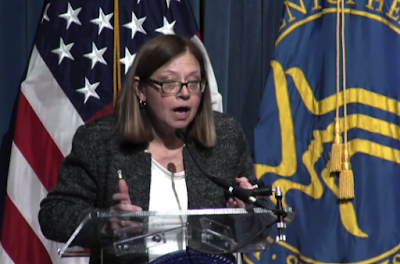As reported by the Associated Press, The American Academy of Pain Medicine has cancelled its plans for a webinar in July aimed at training doctors on the use of cannabis instead of opiates for pain. The cancellation followed "a request from the U.S. government agency that provided the funding." The agency was the Substance Abuse and Mental Health Services Administration, or SAMHSA, a division of the U.S. Department of Health and Human Services (HHS).
“We cannot speak to the reason that SAMHSA has asked that we not proceed with this webinar, but the webinar will no longer take place,” AAPM spokeswoman Megan Drumm said in an email to AP.
Scheduled speakers for the course, titled "Opioid Prescribing Amidst Changing Cannabis Laws,” were pain doctors from the University of Texas and the University of California, San Diego. They planned to cover how to select patients for medical cannabis, appropriate products and doses, and how to “wean opioids in patients on chronic opioid therapy,” according to the course description.
A study released in March concluded that only 9% of medical schools are teaching students about cannabis as a medicine. “I’m not surprised by the findings,” commented Mark Steven Wallace, MD, chair of the Division of Pain Medicine at UC San Diego Health and one of the speakers scheduled for the now-cancelled webinar. Dr. Wallace said there is an opportunity for experiential learning on the topic at pain clinics like his, where medical cannabis is recommended “every day.”
Dr. Wallace has observed that some chronic pain patients arrive at the clinic after having tried and responded negatively to medical marijuana. “Quite often that’s because they have not been using the right formulation or have been using too high a dose,” he said. “We find that a low dose of a strain that combines THC [tetrahydrocannabinol] with CBD [cannabidiol] is most effective, but you won’t find that mentioned in the literature or taught in the classroom.”
At a recent talk, Dr. Wallace drew on his many years of experience with pain patients and cannabis, saying, "And what I've seen is some patients will get to as much as an 80% reduction in their opioids with cannabis. I look at that as a success and will let them continue on cannabis as long as they can keep the opioid use down." One patient, a burn victim from one of California's devastating wildfires, said “I smoke a little marijuana or ingest a little marijuana… and that [pain] goes away. Do you know how many pills it used to take to do that? A plethora of pills to do what one little plant can do.”
SAMHSA oversees more than $1 billion in grants to fight opioid addiction and is headed by Dr. Elinore McCance-Katz (pictured).
Despite a plethora of studies showing states with access to medical cannabis have lower rates of opiate overdose, our public servant McCance-Katz claimed during a recent talk that the research is flawed and suggests that there are other reasons overdoses went down in those states, including states starting to regulate opioid prescribing more. (Except that is happening in all states, not just the ones with legal medical marijuana.) Overall she disapproves of cannabis, on which she starts in at 1:04, claiming, “For too many years, a multibillion dollar, unopposed industry has presented this as healthy pastime."
Instead of considering the safer option of cannabis, Dr. McCance-Katz touts her agency’s success in promoting MAT (medically assisted treatment, meaning methadone, naltrexone, or buprenorphine) for opioid abuse. While that is a somewhat progressive policy, those are much stronger drugs than cannabinoids.
A new study from the Nationwide Children’s Hospital’s Center for Injury Research and Policy conducted in association with the Central Ohio Poison Center reports over 11,000 calls to poison centers nationwide between 2007 and 2016 for pediatric exposure to buprenorphine. 86% of these referrals involved children under 6 years of age, for which 98% of calls were for unintentional ingestion. Almost one-half of the children involved required treatment at a healthcare facility, and 21% experienced serious adverse effects. 11 children died. In contrast to younger children, the study found that 77% of buprenorphine exposure in teens aged 13-19 was intentional, and 28% also involved multiple drugs. 150 suspected suicide attempts were logged in the study period.
McCance-Katz and her husband hold a patent for a method used to prevent urine specimen substitution in substance use screening. O'Shaughnessy's asks, "Can you spell conflict of interest?"
Thirty-one states have legalized medical marijuana, and at least nine of those states require doctors to get training before they can recommend cannabis. The Accreditation Council for Continuing Medical Education recently published guidance for training on cannabis, and a report last year from the National Academies of Sciences, Engineering and Medicine concluded that cannabis is effective against chronic pain. But even in the midst of a growing opiate crisis in our country, our federal government is making sure U.S. doctors stay uninformed about cannabis as an alternative treatment for pain.



No comments:
Post a Comment